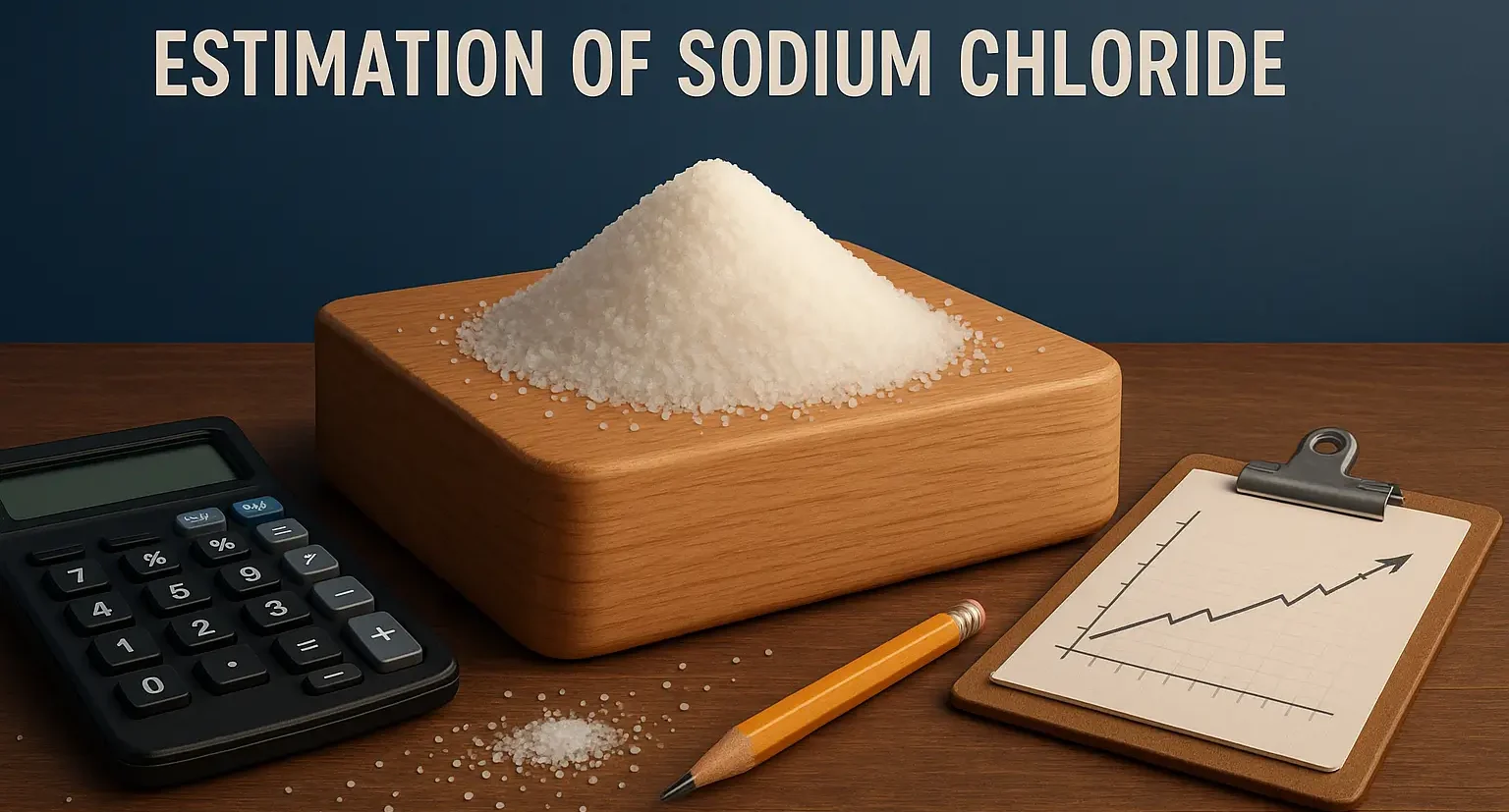- In pharmaceutical analysis, the estimation of sodium chloride (NaCl) can be done through precipitation titrations.
- Precipitation titrations are a type of volumetric analysis where a precipitating agent is added to the sample to cause the formation of a solid precipitate.
- The endpoint of the titration is reached when all of the analyte has reacted to form the precipitate, and this can be detected using an appropriate indicator or by observing a change in some physical property.
Here are the steps involved in estimating sodium chloride using a precipitation titration:
Reagents and Equipment:
- Sample: Pharmaceutical sample containing sodium chloride.
- Standard Solution: Standardized silver nitrate (AgNO₃) solution.
- Indicator: Potassium chromate (K₂CrO₄), which forms a reddish-brown precipitate (Ag₂CrO₄) at the endpoint.
- Glassware: Burettes, pipettes, beakers, and Erlenmeyer flasks for accurate measurements.
- Stirring rod: For mixing the solution during titration.
Procedure of Estimation of sodium chloride:
-
Preparation of the Sample:
- Weigh a known amount of the pharmaceutical sample containing sodium chloride.
- Dissolve it in distilled water in a beaker.
-
Add Indicator:
- Add a few drops of potassium chromate (K₂CrO₄) indicator to the solution.
- The solution will turn yellow due to the presence of chromate ions.
-
Titration:
- Titrate the sample solution with standardized AgNO₃ solution using a burette.
- Silver ions (Ag⁺) react with chloride ions (Cl⁻) to form a white precipitate of silver chloride (AgCl).
- Reaction:
AgNO₃ + NaCl → AgCl + NaNO₃ - Continue adding AgNO₃ until the endpoint is reached, which is indicated by a color change from yellow to reddish-brown due to the formation of silver chromate (Ag₂CrO₄).
-
Note the Volume:
- Record the volume of AgNO₃ solution used to reach the endpoint.
-
Calculations:
- Use the following formula to calculate the amount of NaCl in the sample:
Amount of NaCl (g) = (Volume of AgNO₃ (mL) × Normality of AgNO₃ × Molecular weight of NaCl) / 1
- Molecular weight of NaCl = 58.44 g/mol.
- Use the following formula to calculate the amount of NaCl in the sample:
-
Express Results:
- Report the result as the percentage of sodium chloride in the pharmaceutical sample.
Advertisements

